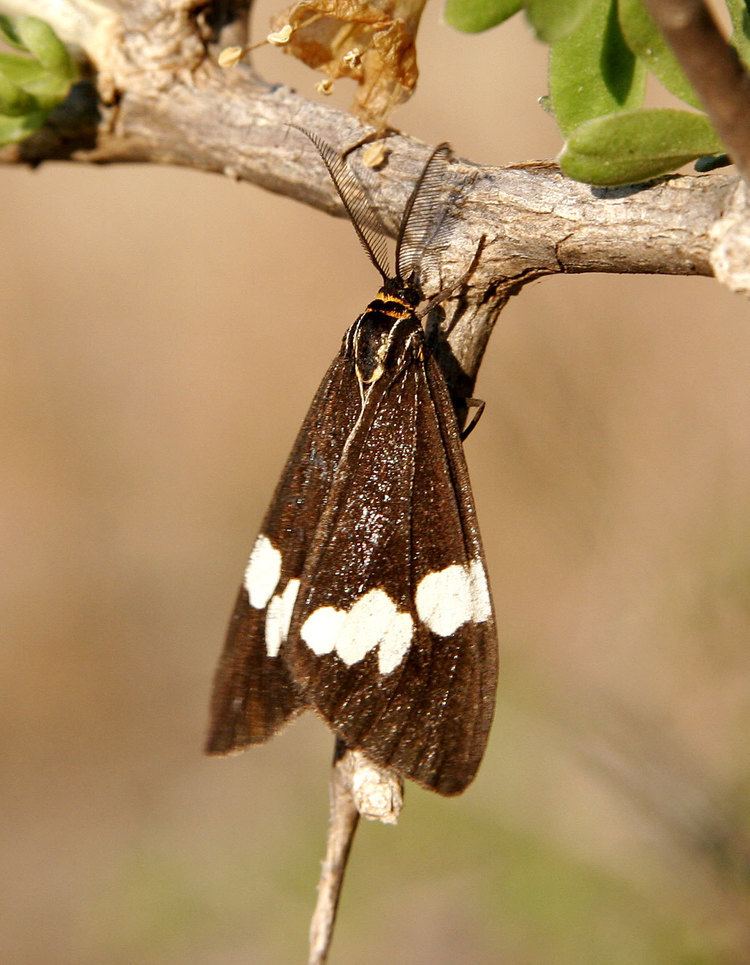Scientific name Nyctemera Higher classification Arctiinae | Rank Genus | |
 | ||
Similar Arctiinae, Nyctemera adversata, Butterflies and moths, Insect, Nyctemera annulata | ||
Marbled white moth nyctemera coleta
Nyctemera is a genus of tiger moths in the Erebidae family. The genus includes the species Nyctemera annulata and Nyctemera amica, which are closely related and are able to interbreed.
Contents
- Marbled white moth nyctemera coleta
- Common nyctemera moth
- Description
- Ecology
- Taxonomy
- Subgenus Tritomera de Vos Dubatolov 2010
- Afrotropical species transferred into Afronyctemera Dubatolov 2006
- Main articles on Nyctemera taxonomy
- References
Common nyctemera moth
Description
They are medium-sized moths, the adults having a wingspan of 35–45 millimetres (1.4–1.8 in). The wings are usually dark with lighter patches, while the body is often aposematically coloured to discourage birds and other visual predators from eating them.
Palpi porrectly upturned. Antennae bipectinate in both sexes, where branches short in females. Fore wing with vein 3 from before the angle of cell, vein 5 from above it and vein 6 from upper angle. Vein 7 and 10 from short areole which is formed by the anastomosis of veins 8 and 9. Hind wings with vein 3 from before end of cell and vein 5 from angle or from above it. Veins 6 and 7 stalked or from upper angle. Vein 8 from before middle of all.
Ecology
The slow-flying moths can often be seen feeding at flowers; it is common around its preferred food plants of the daisy family, for example groundsel (and other Senecio spp.), ragworts and Cineraria. The colourful hairy larvae feed openly on the plants, often stripping off all the leaves. The mature larvae will sometimes wander from the plant to pupate. The loosely spun cocoon incorporates some of the larval hairs and may also be found amongst leaves.
Taxonomy
Several species formerly placed here are now assigned to other genera. These include Utetheisa (containing Atasca, Pitasila and Raanya, erstwhile subgenera of Nyctemera), the revalidated Chiromachla, Podomachla and Xylecata, and the newly established Afronyctemera.
